Deborah Swift's Blog, page 40
February 28, 2013
The Origins of the Quaker Pledge for Peace
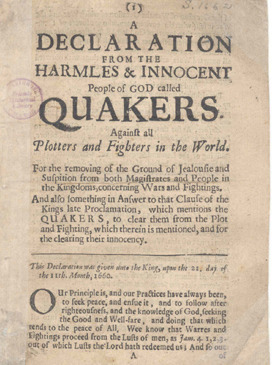 'We utterly deny all outward wars and strife and
'We utterly deny all outward wars and strife andfighting with outward weapons for any end or under any pretense whatever; this is our testimony to the whole world'
On the 21st November 1660 George Fox, founder of the Society of Friends, or Quakers, drew up a declaration for peace and presented it to the newly restored King, Charles II.
Fox's jounal indicates that the document was suppressed when he tried to publish it, saying that it was taken from the presses by the city authorities.
Notice how on the document, they refer to themselves as 'harmless and innocent' and say the declaration is against 'all plotters and fighters in the world.' These words are specifically to distance themselves from the Fifth Monarchists - a sect led by Thomas Venner who caused about forty deaths in an uprising in January of that year. In fact because of these uprisings the King outlawed Fifth Monarchists, Baptists and Quakers from holding public meetings and all members of these sects were required to take an Oath of Allegiance to the King.
The Fifth Monarchists were a radical religious movement that used both social and political pressure to effect their message and vision of a new religious "Golden Age" which they thought was about to begin, with the literal coming of the Messiah.
The riot began whenThomas Venner and his men wanted to gain control of St Paul's Church (then not a cathedral) and took his men to a bookseller called Mr. Johnson to demand the Cathedral keys. (Pepy's diary)
Upon being refused they broke in to the shop and accosted passers-by asking who they were for, presumably meaning whether they were for the King (Anglicanism) or for the non-conformists. One answered him "King Charles" and they dispatched him with a shot through the heart. A scuffle ensued and trained bands of soldiers had to be brought in by the monarchy to quell the unrest.In later days Venner tried to storm the Comptor Prison to liberate the inmates so they could increase their ranks, but they were repulsed in fierce fighting. To give an idea of the brutality of fighting in these times, Venner is said to have killed three men with a halberd in Threadneedle Street.TheFifth Monarchists made their last stand in two pubs, the Helmet Tavern on Threadneedle Street and the Blue Anchor on Coleman Street. Esconced inside they were only routed when Royalist troops smashed through the clay roof tiles with musket butts and fired down through the ceiling. Venner was captured after being wounded nineteen times, and put to death alomst immediately by hanging.No wonder Fox and his colleagues sought to dissassociate themselves from Venner's sect.
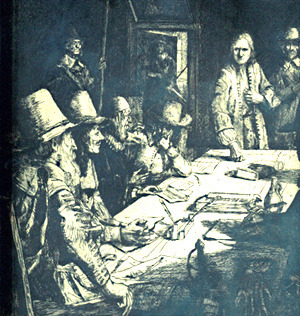 George Fox at Holker Hall 1662
George Fox at Holker Hall 1662 Since that time Quakers have kept their peace promise. I have often thought that in earlier times it must have been a much more difficult feat to achieve. In The Lady's Slipper the Quaker, Richard Wheeler, struggles with the pledge of non-violence. He lives in a society where disputes are settled by the sword. How will he fare when he has to defend the life of the woman he loves?More about the Peace Declaration can be found here,

Picture from the Kendal Quaker Tapestry http://www.quaker-tapestry.co.uk
Published on February 28, 2013 08:12
February 10, 2013
Chocolate and Romance from the 17th Century

 The Chocolate Girlby Jean Etienne Liotard
The Chocolate Girlby Jean Etienne LiotardI first wrote about this painting back in December last year in a post about maidservants, but I thought it was a great story for a Valentine's week post and worth highlighting again. I don't know if there is a novel based on this Cinderella-like tale, but it might make a good one. (No plans for it myself!)
The story behind the commissioning of this painting is a great romantic myth. The girl in the portrait, Anna Baltauf, worked as a maidservant in one of the Viennese chocolate shops which had become hugely popular during the 17th and18th centuries. She had little chance of good marriage as her father was too poor to give her a good dowry, however in the summer of 1745, a young Austrian nobleman - Prince Dietrichstein - came into the shop. He fell in love with the Chocolate Girl and asked her to marry him, despite objections from his family As a wedding present to his 'chocolate girl' he commissioned this portrait of his wife wearing the maid’s costume she was wearing when he first set eyes on her. Is this true? I guess we'll never really know.
Ella Appleby from my book The Gilded Lily would have loved this story. It was what she dreamed about for herself, that a prince might come and rescue her from her humdrum life. Sadie, her sister, would have gently told her to stop dreaming and to deliver the tray to the customer before the chocolate went cold.More information about the story can be found here
 The painting itself, formerly in Dresden, survived World War II and Allied bombs by being kept in a damp cellar in Konigstein Fortress and brought back to Dresden after the Germans retreated from advancing Russian troops. Fortunately it seems none the worse, and is a wonderful portrait of costume and detail from the mid 18th century.
The painting itself, formerly in Dresden, survived World War II and Allied bombs by being kept in a damp cellar in Konigstein Fortress and brought back to Dresden after the Germans retreated from advancing Russian troops. Fortunately it seems none the worse, and is a wonderful portrait of costume and detail from the mid 18th century.The same girl can be seen in one of Liotard's other works, 'The Breakfast.'
I am offering two copies of THE GILDED LILY - one for the Hearts through History Blog Hop, and one for the League of British Artists Valentine Giveaway. (Click to take you there)Both are International - wherever Book Depository delivers.
Please comment below to enter the Hearts Through History Giveaway and leave an email address. Two extra entries for following my blog, one extra entry if you 'like' my facebook page http://www.facebook.com/TheGildedLilyBook
Hop Participants - Hearts Through History Random Bits of Fascination (Maria Grace)
Pillings Writing Corner (David Pilling)
Sally Smith O’Rourke
Darcyholic Diversions (Barbara Tiller Cole)
Faith, Hope and Cherry Tea
Rosanne Lortz
Sharon Lathan
Debra Brown
Heyerwood (Lauren Gilbert)
Regina Jeffers
Ginger Myrick
Anna Belfrage
Fall in love with history (Grace Elliot)
Nancy Bilyeau
Wendy Dunn
E.M. Powell
Georgie Lee
The Riddle of Writing (Deborah Swift)
Outtakes from a Historical Novelist (Kim Rendfeld)
The heart of romance (Sherry Gloag)
A day in the life of patootie (Lori Crane)
Karen Aminadra
Dunhaven Place (Heidi Ashworth)
Stephanie Renee dos Santos
Good luck everyone!
Published on February 10, 2013 06:50
February 6, 2013
Thimbles - 17thCentury Engagement Rings
 www.silive.comThinking about Valentine's Day ahead, I thought I'd share with you a snippet of research I discovered when I was writing my novel 'The Lady's Slipper' which features a woman who travels to the New World (ie America) in the 17th century.
www.silive.comThinking about Valentine's Day ahead, I thought I'd share with you a snippet of research I discovered when I was writing my novel 'The Lady's Slipper' which features a woman who travels to the New World (ie America) in the 17th century.I read that the Quakers and Puritans -some of the first settlers in the New World - did not like to wear jewellery, including wedding and engagement rings. This was because of their beliefs in living a simple and unostentatious life without embellishment or adornment - plain clothes in muted colours, and no unnecessary decoration.
[image error]17thC open-topped thimble www.treasurenet.com
Instead of the giving of a ring, it apparently became the custom for a betrothed couple to exchange a thimble. The thimble was something practical and was used by young women to sew household linens, and garments used as part of their dowry.
After the wedding, the man would cut off the cup of the thimble thus symbolizing that the young woman's sewing was over and the dowry was complete. The rim was then worn as a ring.
 www.mercerieambulante.typepad.comSome people dispute this claim, that thimbles were used as wedding rings, as a sort of 17th century urban myth. Click the link for the arguments against the idea.
www.mercerieambulante.typepad.comSome people dispute this claim, that thimbles were used as wedding rings, as a sort of 17th century urban myth. Click the link for the arguments against the idea.Also, Quaker weddings at the time were not like the usual 17th century wedding in that they were agreed by the whole community of Quakers and subject to the feeling of the meeting as to whether the union was 'right.'
But being an old romantic, and loving a good story I like to think that young men would have used a romantic gesture like the giving of a thimble - so I prefer to believe this is true!
Published on February 06, 2013 04:22
February 4, 2013
The Promise by Ann Weisgarber, the Galveston Hurricane
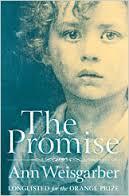
I loved Ann Weisgarber's other novel, so couldn't wait to grab this when it came up on Vine. Lovers of literary or historical fiction will find this a fascinating account of the Galveston disaster - a hurricane and tidal wave that swept the shores of Texas at the turn of the 20th century.
The two women telling the story have very distinct voices and I felt myself alternately rooting for first one and then the other.From different backgrounds, the two women are forced into each others company by their relationships with the same man, Oscar, and the child, Andre, left behind after the death of his first wife.
The relationship between the women is naturally uncomfortable, but this is subtly drawn, and never vocalised. The two main characters, Catherine and Nan, each tell it how it was for them, their view of the other, and great tension arises from this. The settings are so real you think you have been there. When the hurricane strikes the drama is all in the characters - in a way they make an impression far bigger than the hurricane, though that too is beautifully descibed. Poignant and moving, I was gripped and stayed up late to finish it - highly recommended.
I'd never heard of this hurricane or Galveston, so I have been educated as well as entertained.If you want to know more about the disaster, then here is the wiki link
 after the hurricane
after the hurricane
Published on February 04, 2013 08:19
January 28, 2013
My writing year ahead, a conference, an anthology, a publication
I have just finished the copy-edits for A Divided Inheritance (scheduled for publication with Pan Macmillan in October) and can now get back to writing my fourth novel. My previous three have all been set in the 17th century, but for my fourth I am trying something new. It is still a historical novel but set in much more modern times - in 1945.
So what are the advantages to writing outside my usual box?
Firstly it gives my imagination a new place to roam, and enables me to tackle a whole new vein of research. A more modern novel demands different types of dialogue and a closer adherance to the way people behave now. In earlier times punishments were written large - death by burning or hanging, arguments could be settled by the sword or by the gun. In more modern times punishments can be loss of freedom, arguments settled by the tongue. The earlier periods were often (though not always) a more magnified version of our current times. A more modern novel has to scale these down to create a believable society.
So I am enjoying these new challenges, and working on a period which is just within living memory.
But it's not all work and no play.
 Recently I was lucky enough to meet some other writers at Pan Macmillan's Women's Fiction Party. One of these was Pamela Hartshorne whose time-slip novel Time's Echo I very much enjoyed. It is set in Tudor York, which is a glorious evocative setting. And if you love history, romance and ghosts, you'll love this.
Recently I was lucky enough to meet some other writers at Pan Macmillan's Women's Fiction Party. One of these was Pamela Hartshorne whose time-slip novel Time's Echo I very much enjoyed. It is set in Tudor York, which is a glorious evocative setting. And if you love history, romance and ghosts, you'll love this.
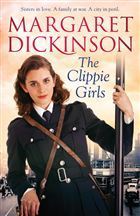
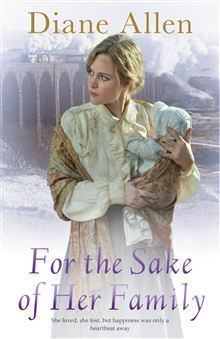 I also was able to congratulate Margaret Dickinson on her twentieth novel. I finished her book 'Jenny's War' about an evacuee in WWII a couple of months ago and really enjoyed it. Her new one, 'The Clippie Girls' is coming out on Valentine's Day. Not sure I'll manage to write twenty books like Margaret has before I expire, but it's definitely something to aim for! I also met up with Diane Allen, whose debut saga, 'For the Sake of her Family' has been a big success. Diane is another northener who works at Magna Books who published two of my novels in Large Print editions.
I also was able to congratulate Margaret Dickinson on her twentieth novel. I finished her book 'Jenny's War' about an evacuee in WWII a couple of months ago and really enjoyed it. Her new one, 'The Clippie Girls' is coming out on Valentine's Day. Not sure I'll manage to write twenty books like Margaret has before I expire, but it's definitely something to aim for! I also met up with Diane Allen, whose debut saga, 'For the Sake of her Family' has been a big success. Diane is another northener who works at Magna Books who published two of my novels in Large Print editions.
I enjoyed meeting fellow writers, and I'm looking forward to meeting more - this time in America at The Historical Novel Society Conference I have been invited to appear on two panels ('Making it to Mainstream' about my unusual route to publication, and 'The Virtual Salon' about how blogging can link writers with readers). If anyone is going to the conference, particularly if you have read my books or are a fan of the 17th century, please come and say hello. Or you could rescue my husband who as yet does not know what he is letting himself in for!
More News:Short Story Success!My short story, 'A Dog's Life' was shortlisted for the Historical Novel society short story award. The good news is, the HNS are going to publish all twelve stories in an anthology, to be made available soon as a Kindle book.Watch this space!
The Gilded Lily, out now in the USA.
The Gilded Lily was selected as one of the '13 must reads in 2013' by Good Morning Texas TV programme.
So what are the advantages to writing outside my usual box?
Firstly it gives my imagination a new place to roam, and enables me to tackle a whole new vein of research. A more modern novel demands different types of dialogue and a closer adherance to the way people behave now. In earlier times punishments were written large - death by burning or hanging, arguments could be settled by the sword or by the gun. In more modern times punishments can be loss of freedom, arguments settled by the tongue. The earlier periods were often (though not always) a more magnified version of our current times. A more modern novel has to scale these down to create a believable society.
So I am enjoying these new challenges, and working on a period which is just within living memory.
But it's not all work and no play.
 Recently I was lucky enough to meet some other writers at Pan Macmillan's Women's Fiction Party. One of these was Pamela Hartshorne whose time-slip novel Time's Echo I very much enjoyed. It is set in Tudor York, which is a glorious evocative setting. And if you love history, romance and ghosts, you'll love this.
Recently I was lucky enough to meet some other writers at Pan Macmillan's Women's Fiction Party. One of these was Pamela Hartshorne whose time-slip novel Time's Echo I very much enjoyed. It is set in Tudor York, which is a glorious evocative setting. And if you love history, romance and ghosts, you'll love this.

 I also was able to congratulate Margaret Dickinson on her twentieth novel. I finished her book 'Jenny's War' about an evacuee in WWII a couple of months ago and really enjoyed it. Her new one, 'The Clippie Girls' is coming out on Valentine's Day. Not sure I'll manage to write twenty books like Margaret has before I expire, but it's definitely something to aim for! I also met up with Diane Allen, whose debut saga, 'For the Sake of her Family' has been a big success. Diane is another northener who works at Magna Books who published two of my novels in Large Print editions.
I also was able to congratulate Margaret Dickinson on her twentieth novel. I finished her book 'Jenny's War' about an evacuee in WWII a couple of months ago and really enjoyed it. Her new one, 'The Clippie Girls' is coming out on Valentine's Day. Not sure I'll manage to write twenty books like Margaret has before I expire, but it's definitely something to aim for! I also met up with Diane Allen, whose debut saga, 'For the Sake of her Family' has been a big success. Diane is another northener who works at Magna Books who published two of my novels in Large Print editions.I enjoyed meeting fellow writers, and I'm looking forward to meeting more - this time in America at The Historical Novel Society Conference I have been invited to appear on two panels ('Making it to Mainstream' about my unusual route to publication, and 'The Virtual Salon' about how blogging can link writers with readers). If anyone is going to the conference, particularly if you have read my books or are a fan of the 17th century, please come and say hello. Or you could rescue my husband who as yet does not know what he is letting himself in for!
More News:Short Story Success!My short story, 'A Dog's Life' was shortlisted for the Historical Novel society short story award. The good news is, the HNS are going to publish all twelve stories in an anthology, to be made available soon as a Kindle book.Watch this space!
The Gilded Lily, out now in the USA.
The Gilded Lily was selected as one of the '13 must reads in 2013' by Good Morning Texas TV programme.
Published on January 28, 2013 08:32
January 20, 2013
Elizabeth Murray and The English Civil War
[image error]
Anita SeymourI had been following Anita Davison's blog, The Disorganized Author for a while because like me, Anita is passionate about the 17th Century. We both blog at Hoydens and Firebrands - a blog that specialises in 17th century history and interests.
After talking online for a bit, we managed to touch base briefly at the Historical Novel Society conference where she told me about her latest book. Now re-named as Anita Seymour, her historical biography about Elizabeth Murray was taken up by Pen and Sword Press. Seymour is a grand historical name!
Those of you who enjoyed my book The Lady's Slipper might want to discover more about the English Civil war through Anita's book. My copy should be dropping through the door any day soon. The story of how a painting inspired Royalist Rebel can be found on my other blog, Royalty Free Fiction

Royalist Rebel by Anita Seymour
Intelligent, witty and beautiful, Elizabeth Murray wasn’t born noble; her family’s fortunes came from her Scottish father’s boyhood friendship with King Charles. As the heir to Ham House, their mansion on the Thames near Richmond, Elizabeth was always destined for greater things.
Royalist Rebel is the story of Elizabeth’s youth during the English Civil War, of a determined and passionate young woman dedicated to Ham House, the Royalist cause and the three men in her life; her father William Murray, son of a minister who rose to become King Charles’ friend and confidant, the rich baronet Lionel Tollemache, her husband of twenty years who adored her and John Maitland, Duke of Lauderdale, Charles II’s favourite.
With William Murray at King Charles’ exiled court in Oxford, the five Murray women have to cope alone. Crippled by fines for their Royalist sympathies, and besieged by the Surrey Sequestration Committee, Elizabeth must find a wealthy, non-political husband to save herself, her sisters, and their inheritance.Royalist Rebel by Claymore Books, an imprint of Pen and Sword, was released on 17th January 2013
http://www.pen-and-sword.co.uk/Historical-Fiction/c/146/
For a little background on the novel, see Anita’s Book Bloghttp://royalistrebel.blogspot.co.uk/
The National Trust Website of Elizabeth Murray’s former home, Ham House, at Petersham near Richmond, Surreyhttp://www.nationaltrust.org.uk/ham-house/
After talking online for a bit, we managed to touch base briefly at the Historical Novel Society conference where she told me about her latest book. Now re-named as Anita Seymour, her historical biography about Elizabeth Murray was taken up by Pen and Sword Press. Seymour is a grand historical name!
Those of you who enjoyed my book The Lady's Slipper might want to discover more about the English Civil war through Anita's book. My copy should be dropping through the door any day soon. The story of how a painting inspired Royalist Rebel can be found on my other blog, Royalty Free Fiction

Royalist Rebel by Anita Seymour
Intelligent, witty and beautiful, Elizabeth Murray wasn’t born noble; her family’s fortunes came from her Scottish father’s boyhood friendship with King Charles. As the heir to Ham House, their mansion on the Thames near Richmond, Elizabeth was always destined for greater things.
Royalist Rebel is the story of Elizabeth’s youth during the English Civil War, of a determined and passionate young woman dedicated to Ham House, the Royalist cause and the three men in her life; her father William Murray, son of a minister who rose to become King Charles’ friend and confidant, the rich baronet Lionel Tollemache, her husband of twenty years who adored her and John Maitland, Duke of Lauderdale, Charles II’s favourite.
With William Murray at King Charles’ exiled court in Oxford, the five Murray women have to cope alone. Crippled by fines for their Royalist sympathies, and besieged by the Surrey Sequestration Committee, Elizabeth must find a wealthy, non-political husband to save herself, her sisters, and their inheritance.Royalist Rebel by Claymore Books, an imprint of Pen and Sword, was released on 17th January 2013
http://www.pen-and-sword.co.uk/Historical-Fiction/c/146/
For a little background on the novel, see Anita’s Book Bloghttp://royalistrebel.blogspot.co.uk/
The National Trust Website of Elizabeth Murray’s former home, Ham House, at Petersham near Richmond, Surreyhttp://www.nationaltrust.org.uk/ham-house/
Published on January 20, 2013 07:12
December 20, 2012
Simples and Treacles – botanical secrets of 17th century England
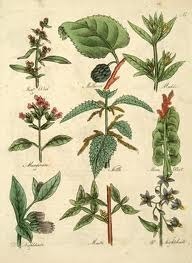

I have loved researching 17th Century botany and herbs for my novels, The Lady’s Slipper and The Gilded Lily. For both of them I have had to research the botanical beliefs of a society that relied on native plants for a good many things, including medicine, cleaning agents, and home-manufactured goods such as cloth. One of my characters is a “cunning woman”, a person skilled in folk medicine. She has no daughters and is looking for someone to whom she can hand down her vast store of knowledge. Remedies were passed down orally, and the plants used were readily and commonly available to a populace which was mostly illiterate. Because little was written about it, evidence of these remedies is most often to be found in kitchen manuals because cooking and medicine were so closely related.
The difference between folk medicine and the “official” medicine was largely that folk medicine used plants that occurred naturally in Britain and had not been brought over from abroad. Official medicine drew on metals, chemical compounds and herbs and spices imported from other countries, such as the Mediterranean or Arabia. Physicians could charge more for their exotic-sounding imports, which by dint of their strangeness appeared to offer more appeal.
In the 17th century many Folk remedies were “simples”, ie a single species of plants used as a cure or palliative, whereas apothecaries mixed perhaps thirty or more of ingredients for their “treacles”. Venice treacle, given by Thomas Sydenham to Lady Sedley in 1686, contained more than 70 ingredients including:
wormwood, orange peel, angelica, nutmeg, horseradish, scurvy grass, white horehound, centaury, camomile, and juniper berries. All infused in 5 pints of sack!
And what was this medicine for? A headache.
 Servants probably made do with feverfew leaves, and were probably better off for it. So in one of my books the middle-class Thomas Ibbetson is given a ‘drench’ (Pouring a vast quantity of liquid medicine into the throat) which worsens rather than cures his condition. In the 17th century, the richer you were, the more likely you were to die of the treatment rather than the disease. Mercury and antimony were common remedies, as was copious blood-letting to release stagnant humours.
Servants probably made do with feverfew leaves, and were probably better off for it. So in one of my books the middle-class Thomas Ibbetson is given a ‘drench’ (Pouring a vast quantity of liquid medicine into the throat) which worsens rather than cures his condition. In the 17th century, the richer you were, the more likely you were to die of the treatment rather than the disease. Mercury and antimony were common remedies, as was copious blood-letting to release stagnant humours. 17th century herbalists such as Gerard, Pechy and the Puritan, Culpeper, were immensely influential in their day, and there was much cross-over between the medicinal and the domestic. For example Culpeper recommends the leaves of the Alder tree for burns, but also for attracting fleas. The leaves were strewed on the ground to attract the fleas, and then the whole lot could be swept out and disposed of. Culpeper’s Herbal is one of the few 17th Century books still in print today. I can also recommend Nicholas Woolley’s book about Culpeper, The Herbalist.
Napier’s History of Herbal Healing says that nettles were used as a pot herb in the Spring, but also its fibres were used in weaving instead of flax, to make tablecloths, sheets and even shirts! It was used medicinally to treat anaemia and as a general tonic, and also to dye the hair as it produced an intense yellow dye. With interest in ‘green’ products today, nettle fibre is again being used to make clothing.
Along with the practical uses of plants was a vast body of mythological lore, both superstitious and religious. Ideas such as that making love under a Rowan tree was a certain cure for infertility, were common. So the herbs themselves were used in a broad rather than a narrow context, embracing the physical, emotional and spiritual being of the user. Many people believed in the “doctrine of signatures” of Paracelsus. This suggests that each plant bears a physical sign, placed there by God, of what it should be used for. So the small bulbs of celandines should be used for piles, because that’s what they look like.
In The Lady’s Slipper, Alice Ibbetson is an artist fascinated by painting wild-flowers, the lady’s slipper being a rare wildflower with medicinal properties.

In The Gilded Lily the plants are used as a beauty aid by Ella Appleby, a serving maid who becomes obsessed with her appearance and the glitter and glamour of Restoration London.
 Nettle blouse!
Nettle blouse!Many 17th century beauty preparations involved common plants. One for a fair complexion is to “take wilde Tansy and lay it to soake in buttermilke.” I haven't tried this yet, but I probably will.For more recipes I can recommend The Artifice of Beauty by Sally Pointer.
This post was first written for the Hoydens and Firebrands blog, why not visit them - a great site about the seventeenth century.
Published on December 20, 2012 04:55
December 10, 2012
The King's Carver
CONGRATULATIONS to Susan who is the winner of The Lady's Slipper picked out of the hat today!
Many thanks to everone else who stopped by my blog and made the effort to enter, wasn't it a great idea of Amy's. Hope you might have won something in the other draws.
A short post today as I'm one of the stops on the Fantastic Historical Fiction Holiday Blog Hop.

 THE LADY'S SLIPPER
THE LADY'S SLIPPER
Top Pick! Swift's eye for detail and language augment this atypical debut. Compelling and intriguing, this is a well-told story full of wonderful prose and surprising events. It's a vivid addition to the genre.
--RT BookReviews
To win a copy of my debut novel THE LADY'S SLIPPER please leave a comment below.
Giveaway Open Worldwide. Don't forget to leave an email address. One extra entry if you follow this blog, and another if you tweet my post.
As for the Historical Holiday Blog Hop - Just look at the fabulous prizes you can win! Click on the banner above to follow the other blogs on this hop.Historical Holiday Blog Hop Grand Prizes - $25 Amazon or Barnes and Noble Gift Card - Prize package(s) from SIXTY historical novels.
GRINLING GIBBONSGrinling Gibbons - such a wonderful name - was the "King's Carver", in the Restoration period and was famous for beautiful carved wood decoration for St Paul's Cathedral, the Palace of Windsor, and the Earl of Essex's house. Legend had it that his carving was so fine that the wooden pot of carved flowers above his house in London would tremble from the motion of passing coaches.
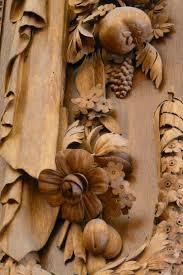
Walpole later wrote about Gibbons: "There is no instance of a man before Gibbons who gave wood the loose and airy lightness of flowers, and chained together the various productions of the elements with the free disorder natural to each species."
Grinling Gibbons was introduced to Christopher Wren by the diarist John Evelyn who spotted him at work and was impressed by his talent. He was able to make wood appear to flow and move and was thus one of the master carvers of the Baroque style. More information about this seventeenth century sculptor in wood can be found at wanderings in eden
or in the book, The Work of Grinling Gibbons by Geoffrey Beard
 A Man's cravat, carved in lime wood by Gibbons,
A Man's cravat, carved in lime wood by Gibbons,
courtesy of the V&A MuseumI love comments!
Many thanks to everone else who stopped by my blog and made the effort to enter, wasn't it a great idea of Amy's. Hope you might have won something in the other draws.
A short post today as I'm one of the stops on the Fantastic Historical Fiction Holiday Blog Hop.

 THE LADY'S SLIPPER
THE LADY'S SLIPPER Top Pick! Swift's eye for detail and language augment this atypical debut. Compelling and intriguing, this is a well-told story full of wonderful prose and surprising events. It's a vivid addition to the genre.
--RT BookReviews
To win a copy of my debut novel THE LADY'S SLIPPER please leave a comment below.
Giveaway Open Worldwide. Don't forget to leave an email address. One extra entry if you follow this blog, and another if you tweet my post.
As for the Historical Holiday Blog Hop - Just look at the fabulous prizes you can win! Click on the banner above to follow the other blogs on this hop.Historical Holiday Blog Hop Grand Prizes - $25 Amazon or Barnes and Noble Gift Card - Prize package(s) from SIXTY historical novels.
GRINLING GIBBONSGrinling Gibbons - such a wonderful name - was the "King's Carver", in the Restoration period and was famous for beautiful carved wood decoration for St Paul's Cathedral, the Palace of Windsor, and the Earl of Essex's house. Legend had it that his carving was so fine that the wooden pot of carved flowers above his house in London would tremble from the motion of passing coaches.

Walpole later wrote about Gibbons: "There is no instance of a man before Gibbons who gave wood the loose and airy lightness of flowers, and chained together the various productions of the elements with the free disorder natural to each species."
Grinling Gibbons was introduced to Christopher Wren by the diarist John Evelyn who spotted him at work and was impressed by his talent. He was able to make wood appear to flow and move and was thus one of the master carvers of the Baroque style. More information about this seventeenth century sculptor in wood can be found at wanderings in eden
or in the book, The Work of Grinling Gibbons by Geoffrey Beard
 A Man's cravat, carved in lime wood by Gibbons,
A Man's cravat, carved in lime wood by Gibbons,courtesy of the V&A MuseumI love comments!
Published on December 10, 2012 02:03
The King's Carver - and A Blog Hop
A short post today as I'm one of the stops on the Fantastic Historical Fiction Holiday Blog Hop.

 THE LADY'S SLIPPER
THE LADY'S SLIPPER
Top Pick! Swift's eye for detail and language augment this atypical debut. Compelling and intriguing, this is a well-told story full of wonderful prose and surprising events. It's a vivid addition to the genre.
--RT BookReviews
To win a copy of my debut novel THE LADY'S SLIPPER please leave a comment below.
Giveaway Open Worldwide. Don't forget to leave an email address. One extra entry if you follow this blog, and another if you tweet my post.
As for the Historical Holiday Blog Hop - Just look at the fabulous prizes you can win! Click on the banner above to follow the other blogs on this hop.Historical Holiday Blog Hop Grand Prizes - $25 Amazon or Barnes and Noble Gift Card - Prize package(s) from SIXTY historical novels.
GRINLING GIBBONSGrinling Gibbons - such a wonderful name - was the "King's Carver", in the Restoration period and was famous for beautiful carved wood decoration for St Paul's Cathedral, the Palace of Windsor, and the Earl of Essex's house. Legend had it that his carving was so fine that the wooden pot of carved flowers above his house in London would tremble from the motion of passing coaches.

Walpole later wrote about Gibbons: "There is no instance of a man before Gibbons who gave wood the loose and airy lightness of flowers, and chained together the various productions of the elements with the free disorder natural to each species."
Grinling Gibbons was introduced to Christopher Wren by the diarist John Evelyn who spotted him at work and was impressed by his talent. He was able to make wood appear to flow and move and was thus one of the master carvers of the Baroque style. More information about this seventeenth century sculptor in wood can be found at wanderings in eden
or in the book, The Work of Grinling Gibbons by Geoffrey Beard
 A Man's cravat, courtesy of the V&A MuseumI love comments!
A Man's cravat, courtesy of the V&A MuseumI love comments!

 THE LADY'S SLIPPER
THE LADY'S SLIPPER Top Pick! Swift's eye for detail and language augment this atypical debut. Compelling and intriguing, this is a well-told story full of wonderful prose and surprising events. It's a vivid addition to the genre.
--RT BookReviews
To win a copy of my debut novel THE LADY'S SLIPPER please leave a comment below.
Giveaway Open Worldwide. Don't forget to leave an email address. One extra entry if you follow this blog, and another if you tweet my post.
As for the Historical Holiday Blog Hop - Just look at the fabulous prizes you can win! Click on the banner above to follow the other blogs on this hop.Historical Holiday Blog Hop Grand Prizes - $25 Amazon or Barnes and Noble Gift Card - Prize package(s) from SIXTY historical novels.
GRINLING GIBBONSGrinling Gibbons - such a wonderful name - was the "King's Carver", in the Restoration period and was famous for beautiful carved wood decoration for St Paul's Cathedral, the Palace of Windsor, and the Earl of Essex's house. Legend had it that his carving was so fine that the wooden pot of carved flowers above his house in London would tremble from the motion of passing coaches.

Walpole later wrote about Gibbons: "There is no instance of a man before Gibbons who gave wood the loose and airy lightness of flowers, and chained together the various productions of the elements with the free disorder natural to each species."
Grinling Gibbons was introduced to Christopher Wren by the diarist John Evelyn who spotted him at work and was impressed by his talent. He was able to make wood appear to flow and move and was thus one of the master carvers of the Baroque style. More information about this seventeenth century sculptor in wood can be found at wanderings in eden
or in the book, The Work of Grinling Gibbons by Geoffrey Beard
 A Man's cravat, courtesy of the V&A MuseumI love comments!
A Man's cravat, courtesy of the V&A MuseumI love comments!
Published on December 10, 2012 02:03
December 5, 2012
The Temptation of the Restoration
The seventeenth century in England had a lot going on. First there was the English Civil Wars where brother fought brother over the division between King and Parliament. Secondly, there was the Plague. And then there was the Great Fire of London. All of these events took a massive toll on human life. 84,830 men were killed in the Civil Wars, 70,000 more died in the Plague. The Great Fire of London destroyed most of the familiar old Tudor streets. What’s more, the beheading of King Charles I had a huge impact on England’s psyche. There was a sense that the governance of England hung in the balance – that the old order was subject to change, and that nothing could be relied upon. It is hardly surprising that at this time, astrologers predicted doom and destruction to come.
Yet the period just after King Charles II was restored to the throne, known as the Restoration period, was one of unrestrained celebration and entertainment. There was a mere five years between 1660, when Charles arrived back in London to fanfares and jubilation, until June 1665 when the first impact of the Plague deaths hit London. I was fascinated to write about this period, a time eclipsed by the bigger events of the century, sandwiched in between the dark days of Cromwell and his Puritan rule, and the dread disease that ravaged the country.
This was the time in which I set The Gilded Lily – a time of surface optimism, but with undertones of unease beneath. The two sisters, Ella and Sadie Appleby, on the run from the Law, escape their rural village hoping for a new and better life in London. This was a quite different City of Londonfrom Tudor London where the Queen aimed for political expansion and gripped the nation with a firm hand - looser and more reactionary.
 Lely - Nell GwynVery much as London in the 1960’s was known as the “Swinging Sixties” and heralded a new era of sexual exploration, 1660’s Londonwas a city of new fashions, of theatres, entertainment, lavish food and a renewed moral freedom. The King gathered his “Merry Gang” around him, the wits, the rakes, the young bloods, such as Buckingham and Rochester. Their sexual exploits fuelled the gossip of the nation, as Charles went through no less than thirteen royal mistresses, and probably a few more undocumented liaisons besides. Men dressed like peacocks in ribbons and bows, women’s décolletage drifted ever lower. An actress like Nell Gwynn could come from nothing yet make her fortune at court.
Lely - Nell GwynVery much as London in the 1960’s was known as the “Swinging Sixties” and heralded a new era of sexual exploration, 1660’s Londonwas a city of new fashions, of theatres, entertainment, lavish food and a renewed moral freedom. The King gathered his “Merry Gang” around him, the wits, the rakes, the young bloods, such as Buckingham and Rochester. Their sexual exploits fuelled the gossip of the nation, as Charles went through no less than thirteen royal mistresses, and probably a few more undocumented liaisons besides. Men dressed like peacocks in ribbons and bows, women’s décolletage drifted ever lower. An actress like Nell Gwynn could come from nothing yet make her fortune at court.In The Gilded Lily, Ella, the bolder sister, has her sights set firmly upward on handsome Jay Whitgift, the son of a pawnbroker, who in turn is fixed on moving upwards to enter the coterie at Court and buying himself a baronetcy. If you have seen the film, The Libertine, with Johnny Depp, this is the sort of society in which Jay Whitgift moves, and to which Ella aspires. I modelled Ella partly on paintings by Gerrrit Von Honthorst, a 17thcentury Dutch artist, who painted Courtesans and women of the lower classes with clarity and detail.
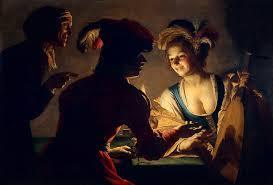
Sadie, the more timid sister, finds the size of Londonterrifying. Londonin these times is owned by the young – many older people lost their lives in the Wars, there is a feeling that life is short. Death by burning is the penalty for those, who like Sadie and Ella, have stolen from their employer. Writing the story through Ella and Sadie’s viewpoints was eye-opening. In an age of conspicuous wealth there is always the flip-side, and Restoration London is no exception. Poverty and the accompanying criminal underworld lurk just beneath the surface, and I enjoyed researching these. London is well-documented at this time, and I spent much time poring over old maps to find where they might have lived. Blackraven Alley, where I placed their lodgings, was later destroyed by the Great Fire of London.
I encourage anyone interested in this period to explore a little further by reading: The Daling Strumpet by Gillan Bagwell – a lovely account of the life of Nell Gwyn, The Apothecary’s Daughter by Charlotte Betts or Year of Wonders by Geraldine Green, two very different books about the Plague, As Meat Loves Salt by Maria McCann about the English Civil Wars, and Restoration by Rose Tremain - insights into Charles II and his court. Please feel free to add to my list!
Today there are reviews up for The Gilded Lily at One Book at a Time and at The Eclectic Reader. Giveaways are running at both. This post first appeared on The True Book Addict Blog.- A great blog with the feature 'this Day in History.'
Published on December 05, 2012 02:49



